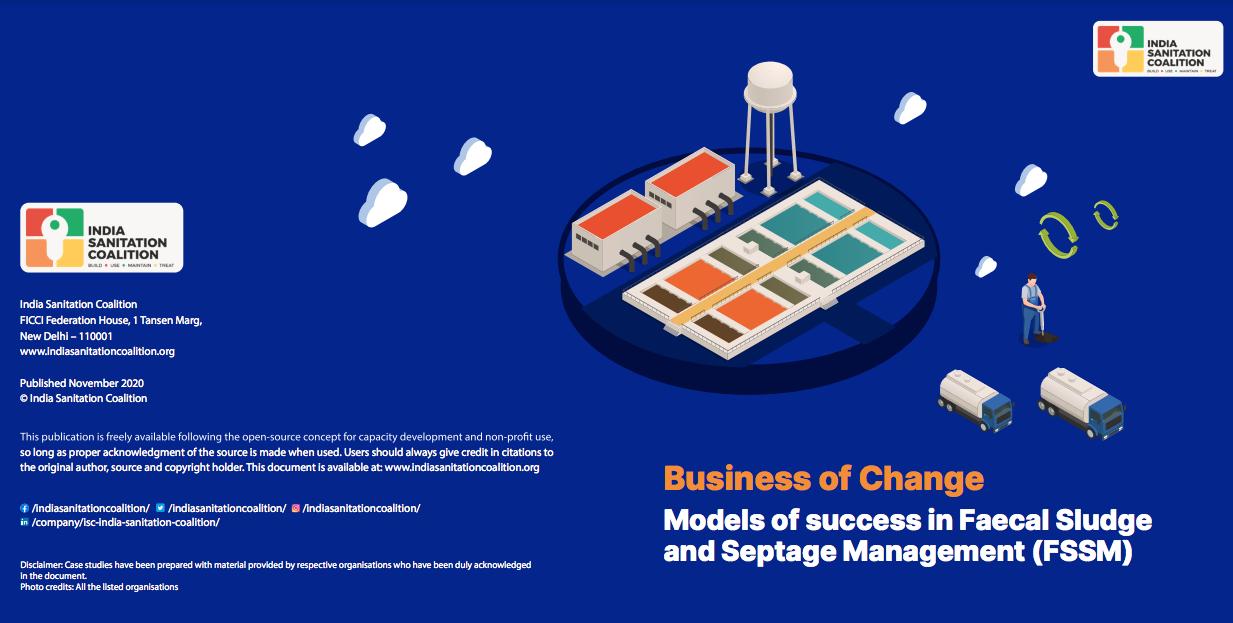Business of Change: Models of Success in Faecal Sludge and Septage Management (FSSM)

Some eighty percent of the world’s wastewater is dumped—largely untreated—back into the environment, polluting rivers, lakes, and oceans. More than sixty percent of sewage generated by urban India enters untreated into water bodies like rivers and lakes, resulting in pollution and making the water unfit for human consumption. A study by Odisha State Pollution Control Board on water quality of eleven major river systems across the State revealed water to be found unfit for human use at ninety odd places. In Delhi too, untreated sewage makes its way to the Yamuna, adding to its pollution. Without action, the challenges will only increase by 2050, when global demand for freshwater is expected to be one-third greater than it is now. Most importantly, within the sanitation target of SDG 6.2, for the first time, the focus is not only on toilet access, but on managing the entire sanitation value chain, encompassing containment, emptying, transport, treatment and safe reuse or disposal. This has actually paved the way for a paradigm shift, where thinking goes beyond piped sewers. Sewer-based systems are
prohibitively expensive and resource-intensive. In fact, the cost of Faecal Sludge Management—FSM (decentralized) technologies is five times less expensive than conventional sewer-based ones in urban areas, depending on the local conditions. These represent viable and more affordable options, if the entire service chain gets managed adequately.
